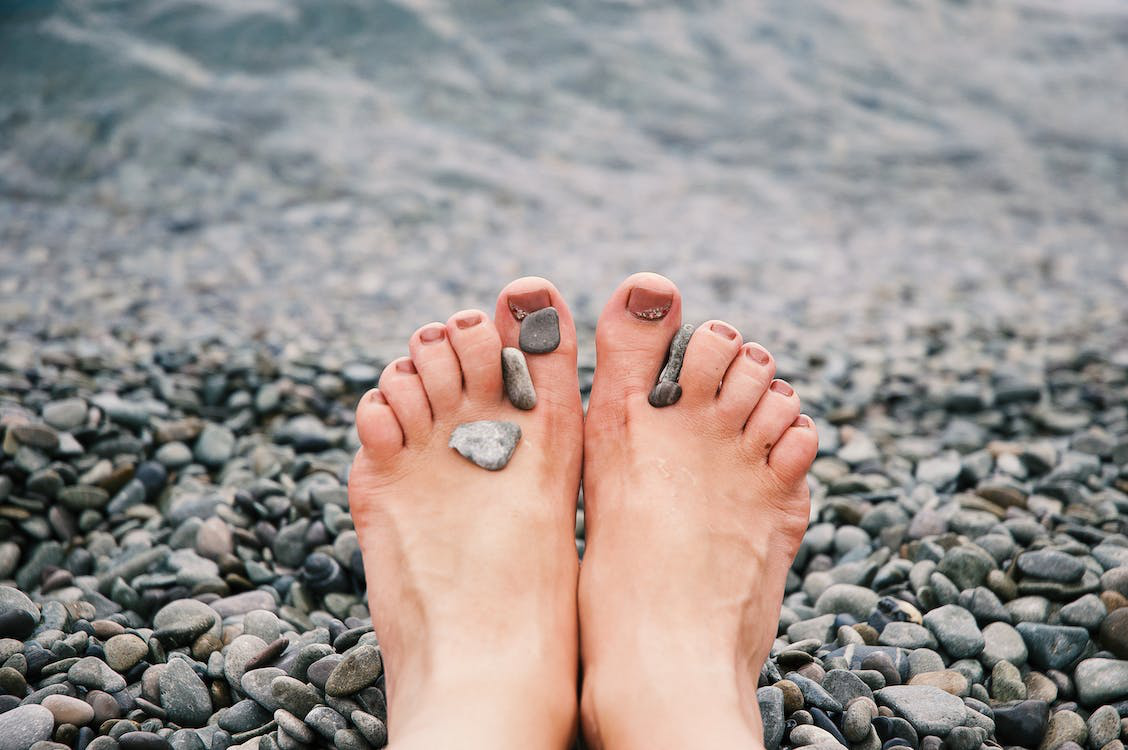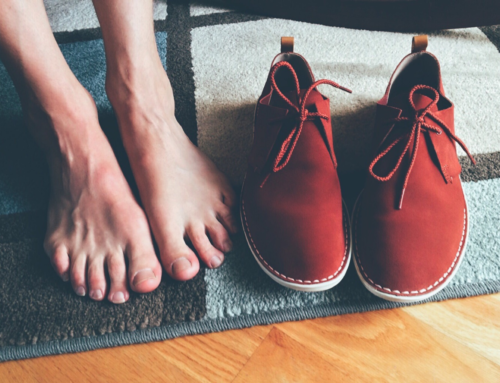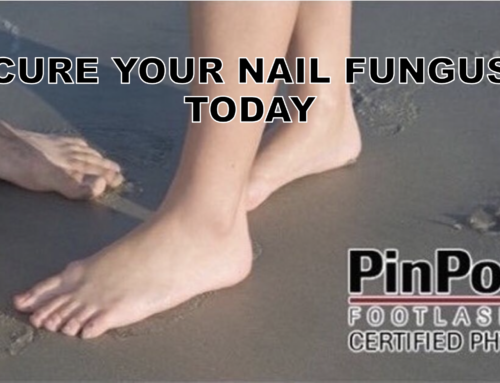Where does toenail fungus come from? Fungal infections can develop in any part of the body. Fungi, along with bacteria, are normally present in the body. When there is an overgrowth of fungi, you get an infection. Fungal infections that affect the nails on the toes or fingers are called Onychomycosis. It is not noticeable when the infection starts because it develops over time.
What is Nail Fungus
A group of fungi called dermatophytes is responsible for most cases of fungal nail infections. Other cases are caused by an overgrowth of yeasts and molds. These microscopic organisms enter through the skin through tiny cuts or between the nail and nail bed.
Fungi thrive in warm, moist environments. Naturally, they overpopulate in similar conditions and cause an infection. It can spread easily. If you come in contact with a person with a fungal infection, you may also contract a fungal infection.
You can also contract a fungal nail infection at the nail salon when getting a manicure or pedicure. The tools they use, such as nail clippers and emery boards, can spread the fungus from person to person. Particles of other people’s nails can remain in the tools, so make sure that the tools are sterilized. To be safe, you can bring your own tools to the nail salon.
Nail fungus on feet or hands?
So why do some people develop fungus on their feet as opposed to hands or vice versa? Once again, these critters thrive in warm and moist places. So if you frequently have your hands or fingers in a warm or wet environment, you are likely to have developed the infection that way. Dishwashers and car washers would likely fall into this category.
In terms of the feet or toenails, the same goes; if you’re a swimmer or have your feet exposed to wet areas, or just have a perspiration problem in the feet, then you are likely to have developed it that way. Some people have parts of their bodies that are just more exposed to these types of conditions, which could potentially cause a spread to the other parts of the body if left untreated.
All in all, fungi live everywhere on almost all surfaces. Some are infectious while others are not, and of those that are infectious, they tend to be very predictable in where they can be found. It is up to you to be cautious.
Infected Nails
Toenails are more commonly affected by fungal infections than fingernails. This is because the toenails are usually in socks and closed-toed footwear. This is the perfect environment for fungi to thrive and infect the toenails.
Since fungi thrive in moist places and can spread easily from person to person, you can easily contract fungal infections in damp communal areas. These places are swimming pools, gym lockers, and public showers. Make sure to wear slippers when going to these places to protect your toes from the fungi in the immediate environment.
What Environments Cause Nail Fungus?
Toenail fungus occurs in many different circumstances. The main question that a lot of people ask is How did I get it? Fungus is located not on the nail itself but under the nail. This is where the nail bed is located. Toenail fungus infections do not appear overnight. You will see the effects of the fungus over time. But what may cause nail fungus? Fungus enjoys environments that are warm and moist. These environments can cause them to naturally overpopulate. These same environments can also cause jock itch, athlete’s foot, and ringworm. Another way of contracting toenail fungus is if you come into contact with someone who already has toenail fungus.
Many ask if toenail fungus is common in ages other than 60 years old. The average age at which many can get toenail fungus is 65 or older, but that does not stop anyone else from getting toenail fungus. Here are people who are more at risk for contracting toenail fungus: diabetics, those with poor circulation, those who wear artificial nails, those who swim in a public pool, those who have a nail injury, those with a skin injury around the nail, those with moist fingers or toes for an extended time, a weakened immune system and wear closed-toe shoes.
Nail infections are more common in men than in women. As well as for older ages, it’s harder because the nails tend to grow more slowly compared to someone who is younger. If you’re unsure that you have toenail fungus, it’s best to go to a podiatrist and get a free consultation. There are many different types of treatment, but the treatment with the best results is the laser treatment using the PinPointe laser. It typically requires one treatment, while other lasers require four or more treatments. There is no pain from the treatment, and you can resume your daily activities after getting it done.
Unmasking Toe Nail Fungus: Lifestyle Factors and Causes
Toenail fungus – two words that can send shivers down the spine of anyone who’s battled this pesky foot ailment. We’ve all heard the stories and seen the cringeworthy photos online, but what causes toenail fungus, and why is it so stubborn?
If you’re hunting for toenail fungus treatment in Dallas, you’ve come to the right place. Today, we’re peeling back the layers to reveal the lifestyle factors and underlying causes of this persistent condition. And don’t worry; we’ve got a secret weapon up our sleeves – Laser Nail Therapy.
You see, there’s no room for compromise when it comes to your feet. They carry you through life, and toenail fungus is just a bump in the road. Let’s embark on this enlightening journey together.
The Sneaky Culprits Behind Toenail Fungus
Before we dive into the fascinating world of toenail fungus, it’s crucial to understand the foes that lurk in the shadows, ready to wreak havoc on your toenails. Several lifestyle factors and underlying causes are at play, and it’s time to unmask them.
1. Dark, Damp Environments
Toenail fungus thrives in warm, dark, and moist environments – think sweaty shoes and locker rooms. It’s a party invitation for these microscopic troublemakers.
Walking around barefoot in such places is like walking into a minefield. The spores are waiting, and they don’t discriminate.

2. Poor Nail Hygiene
Neglecting the care of your toenails is like leaving the front door wide open for fungus to waltz right in. Trimming your nails too short or not cleaning them properly can create an ideal breeding ground for toenail fungus. Proper nail hygiene is your first line of defense.
3. Weakened Immune System
Your immune system is your body’s fortress against invaders, and when it’s not in peak condition, toenail fungus can seize the opportunity. Chronic illnesses, medications, and stress can weaken your immune system, making you more susceptible to fungal infections.
4. Footwear Faux Pas
Your choice of footwear plays a significant role in the battle against toenail fungus. Tight, ill-fitting shoes can cause trauma to the nails, creating small openings that allow fungi to enter. Opt for breathable, moisture-wicking shoes, and give your toes some breathing space.
5. Nail Trauma
Did you accidentally stub your toe or drop something heavy on it? These incidents might seem minor, but they can lead to nail trauma, which opens the door for toenail fungus. Pay attention to those accidents, and don’t ignore any discoloration or pain.
Laser Treatment for Nail Fungus
As you can see, tips for healthy feet without nail fungus can be easy to find. If you have caught nail fungus, it can be easily treated using the FDA-approved PinPointe laser, which typically only takes one treatment. Other treatments, such as topical solutions and oral medication, are not as effective. Topical solutions have a very low cure rate. This is because the solution does not penetrate all the way through the nail bed. This is because it can lead to liver toxicity. You would need to have consistent blood tests throughout the course of taking the medication.
Our nail doctor in Los Angeles, CA, recommends this treatment for toenail fungus. The PinPointe Laser treatment has the highest cure rate in the market. It has no side effects and no recovery period. As a result, you can go about your daily activities right after the treatment. Also, there’s no pain.
If you have any signs of nail fungus, call us at (800) 672-0625 at our Los Angeles, CA location, or visit our website for more information on our doctors at one of our over 150 locations.




